Scott #244, the $4 denomination from the Columbian Exposition series of 1893, holds a prominent place in United States postal history. This series, issued to commemorate the 400th anniversary of Christopher Columbus’s arrival in the Americas, included 16 denominations ranging from 1 cent to $5.
The $4 stamp depicts “Isabella and Columbus,” illustrating Queen Isabella I of Castile conferring support to Columbus for his voyage. This stamp, like others in the Columbian series, was primarily intended for high-denomination postal uses, such as large international mailings or substantial financial transactions requiring secure shipment.
Design & Print
The $4 Columbian stamp was printed by the American Bank Note Company, a key player in 19th-century U.S. stamp production. Issued in 1893, the stamp featured detailed engraving techniques characteristic of the era.
The central vignette depicts Queen Isabella and Columbus, with a carefully balanced composition that reflects the artistic sensibilities of the time. The denomination is prominently displayed at the top, with “Postage Four Dollars” inscribed in ornate lettering.
The stamp was printed in a crimson lake color, but a color variety in rose carmine is also recognized as Scott #244a.
Approximately 26,350 examples of Scott #244 were printed, a relatively small quantity reflecting its high face value. The use of high-quality paper and inks, along with a precise engraving process, ensured the production of a stamp that exemplified the craftsmanship of the American Bank Note Company.
Postal Usage
The $4 denomination of the Columbian series was not designed for general postal use, given its significant value. It was primarily utilized for substantial monetary transactions, such as mailing securities, bonds, or large parcels requiring high-value postage.
At the time of its issue, postal rates for ordinary mail were considerably lower, with domestic first-class postage costing 2 cents per half ounce. Consequently, Scott #244 was mainly used in cases requiring high-denomination stamps to fulfill significant postage requirements.
The Columbian series was released during a period of significant postal reform, including changes in international postage rates under the Universal Postal Union. These changes aimed to standardize rates and improve global mail service efficiency. High-denomination stamps like Scott #244 played a role in facilitating these international exchanges, especially for large, insured shipments between countries.
Moreover, the higher denominations of the Columbian issues were commemorative, and a way for the Post Office to generate more revenue from stamp collectors who purchased them without the intention of using them postally.
Identification
Scott #244 is identifiable by several key characteristics. The design is engraved, with intricate line work in the vignette and frame. The denomination “Postage Four Dollars” appears prominently in an ornate font at the top, distinguishing it from other stamps in the series.
Collectors and postal historians should note the perforation gauge, as Scott #244 is perforated 12. This is consistent with other stamps in the Columbian series. The design’s precision, combined with the color intensity and paper quality, provides additional points of reference for accurate identification.
The top left corner says “1492” while the top right corner says “1892”. Not to be confused with the 1992 reissue (Scott #2625c) that says “1992” in the top right corner.

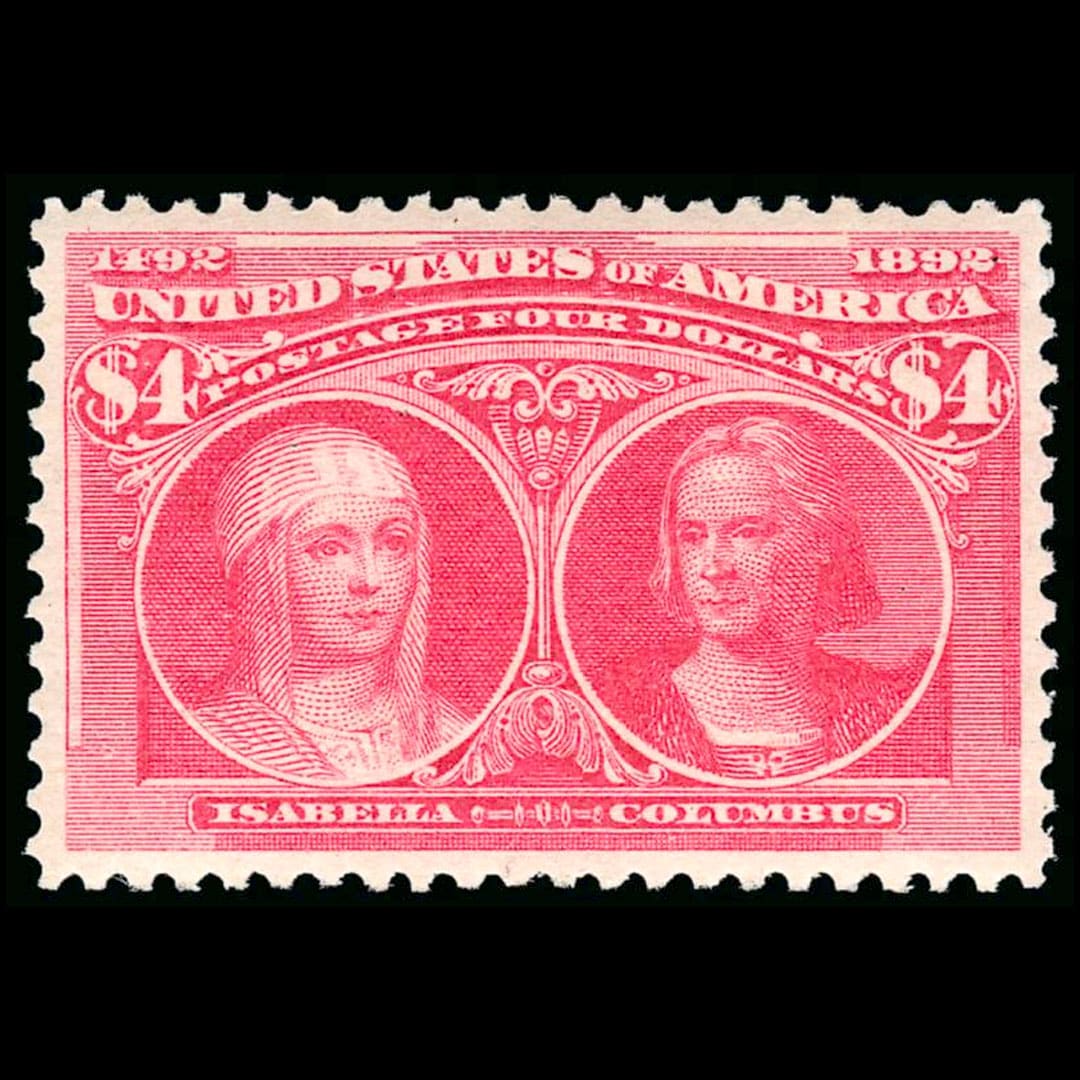

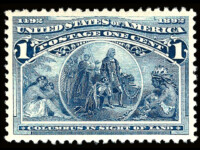
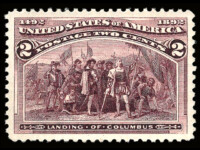
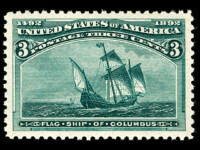
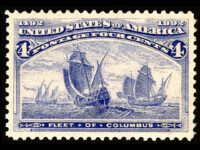
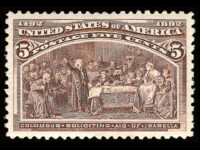
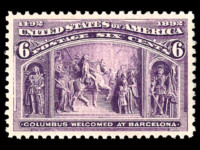
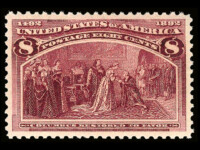
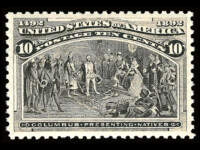
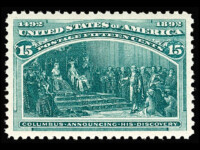
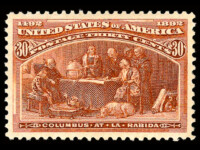
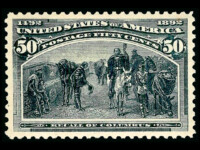
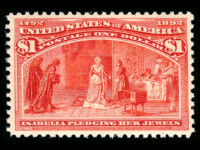
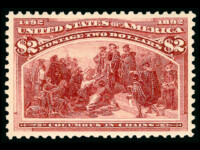
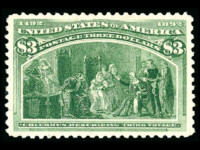
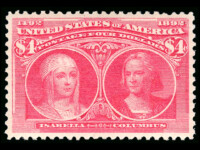
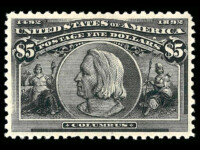









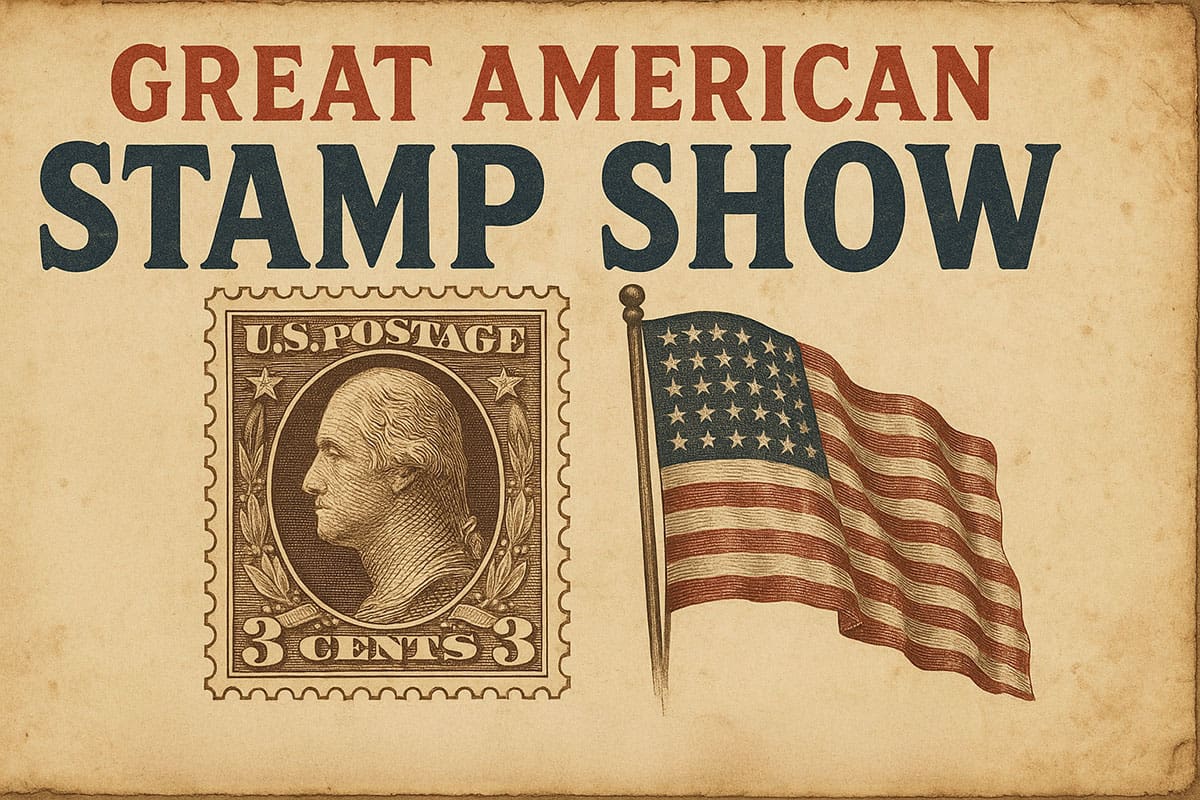

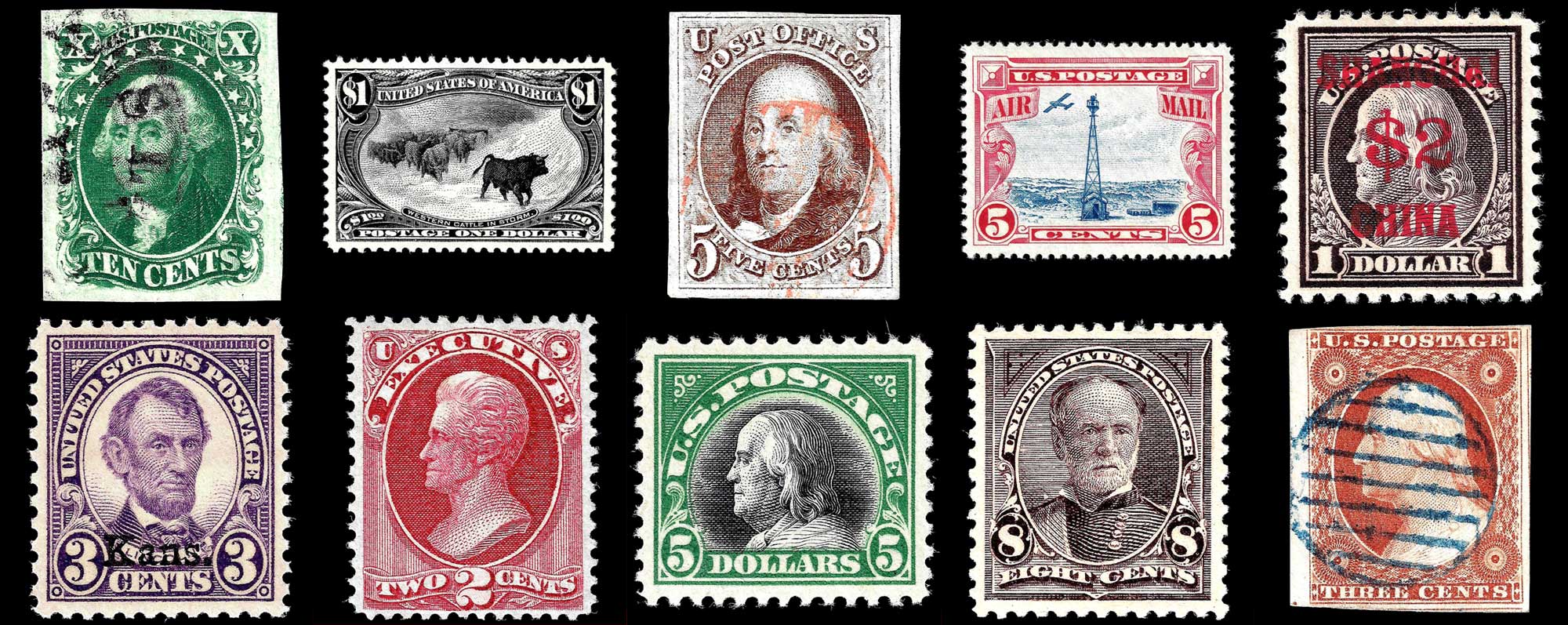
Ask A Question Or Leave A Comment